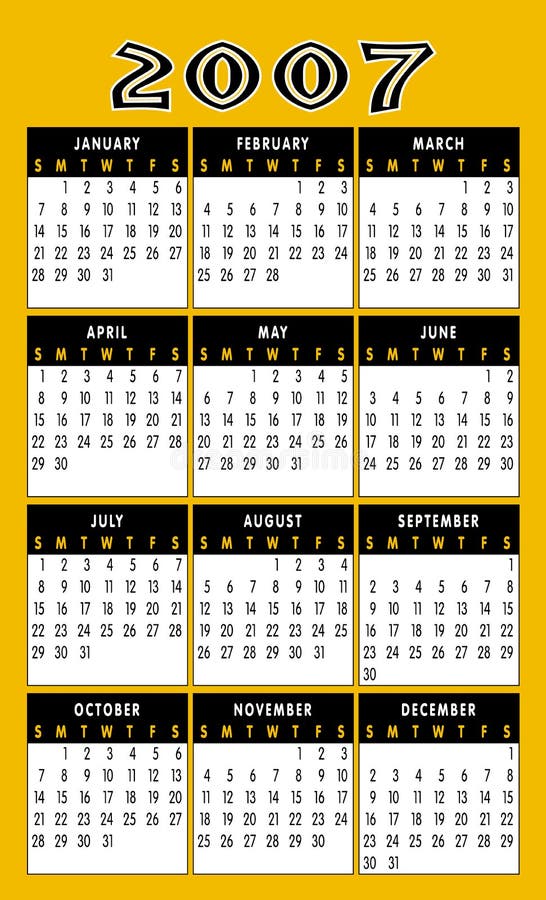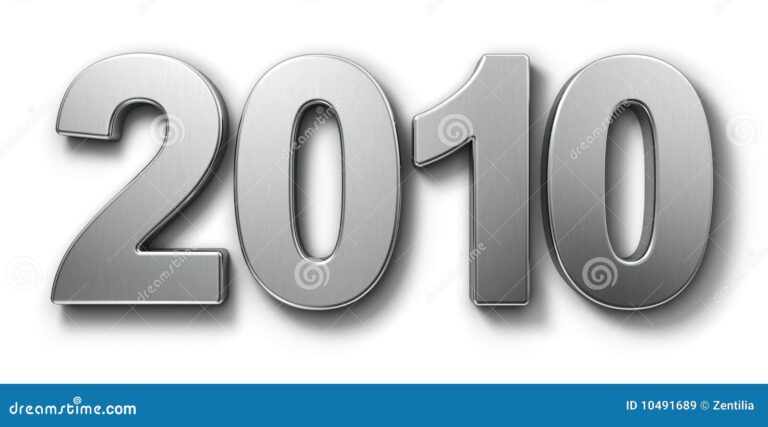Jeep Wrangler Dana 44 Front Axle For Sale: Your Ultimate Guide to an Off-Road Upgrade
Jeep Wrangler Dana 44 Front Axle For Sale: Your Ultimate Guide to an Off-Road Upgrade jeeps.truckstrend.com
For any serious Jeep Wrangler enthusiast, the mention of a "Dana 44 front axle" often elicits a knowing nod and a spark of desire. More than just a collection of gears and shafts, the Dana 44 represents a significant leap in durability, capability, and peace of mind for those who push their Wranglers beyond the pavement. When you see a "Jeep Wrangler Dana 44 Front Axle For Sale" listing, it’s not just an offer for a part; it’s an invitation to unlock a new level of off-road prowess.
This comprehensive guide is designed to be your indispensable resource in understanding, finding, evaluating, and ultimately acquiring a Dana 44 front axle for your Jeep Wrangler. Whether you’re looking to replace a worn-out stock axle, upgrade from a weaker Dana 30, or build the ultimate rock-crawling machine, this article will equip you with the knowledge to make an informed decision.
Jeep Wrangler Dana 44 Front Axle For Sale: Your Ultimate Guide to an Off-Road Upgrade
Why the Dana 44 Front Axle is Coveted by Jeep Enthusiasts
The legendary status of the Dana 44 in the off-road community is well-earned. Compared to the ubiquitous Dana 30 front axle found as standard equipment on many Jeep Wrangler models (especially the Sport and Sahara trims), the Dana 44 offers several critical advantages that translate directly into enhanced performance and reliability:
- Superior Strength: The Dana 44 boasts a larger ring and pinion gear, a larger diameter axle tube, and stronger axle shafts compared to the Dana 30. This robust construction significantly increases its resistance to bending, breaking, and stripping under high stress, such as when running larger tires or tackling challenging obstacles.
- Larger Components: With bigger U-joints and splines, the Dana 44 is inherently designed to handle more torque. This is crucial for maintaining driveline integrity when navigating difficult terrain or when your tires are momentarily stuck and trying to find traction.
- Enhanced Durability: For off-roaders who frequently air down, crawl rocks, or venture into demanding conditions, the Dana 44 reduces the risk of costly trailside repairs. Its beefier components are simply built to withstand more abuse.
- Ideal for Upgrades: The Dana 44 is an excellent foundation for further modifications. Its strength makes it suitable for accommodating larger tires (35-inch and up are common), aftermarket lockers, and lower gear ratios, all of which are essential for advanced off-roading.
- Increased Confidence: Knowing your front axle can handle the stress gives you greater confidence to push your Jeep to its limits, exploring more challenging trails without constant worry about axle failure.

In essence, the Dana 44 transforms a capable off-road vehicle into a truly formidable one, offering the reliability and performance necessary for serious adventure.
Identifying Your Needs: Do You Really Need a Dana 44?
Before diving into the market for a "Jeep Wrangler Dana 44 Front Axle For Sale," it’s crucial to assess whether this upgrade aligns with your specific needs and usage.
-
Who is it for?
- Serious Off-Roaders: If your weekend plans frequently involve rock crawling, aggressive trail riding, or navigating deeply rutted terrain, the Dana 44 is almost a necessity.
- Large Tire Enthusiasts: Anyone running 35-inch tires or larger will significantly benefit from the Dana 44’s strength, as the added leverage from bigger tires puts immense strain on the driveline.
- Frequent Overland Adventurers: While not always extreme, long-distance overland trips often involve remote areas where reliability is paramount. A Dana 44 provides an extra layer of security.
- Those Planning Lockers: If you intend to install selectable lockers for maximum traction, a stronger axle like the Dana 44 is highly recommended to prevent breakages when the locker is engaged.

-
When a Dana 30 Might Suffice:
- If your off-roading is limited to light to moderate trails, fire roads, or occasional mud puddles.
- If you stick to 33-inch tires or smaller.
- If your budget is extremely tight and you prioritize other upgrades first (e.g., suspension, winch). A well-maintained Dana 30 with chromoly shafts can still be quite capable for lighter duties.

Ultimately, the decision boils down to your intended use, your budget, and your tolerance for potential trailside repairs. The Dana 44 is an investment in durability and capability.
Where to Find a Jeep Wrangler Dana 44 Front Axle For Sale
The market for Dana 44 front axles is diverse, offering options for various budgets and preferences.
- New Aftermarket Axles:
- Specialized Manufacturers: Companies like Dynatrac, Currie Enterprises, TeraFlex, and G2 Axle & Gear produce brand-new, often significantly stronger than OEM, Dana 44 (or equivalent) axles. These are typically "crate axles" that come complete with gearing, lockers, and heavy-duty components.
- Pros: Brand new, no wear and tear, often come with enhanced features (thicker tubes, forged inner Cs), warranty.
- Cons: Most expensive option, often custom-built to order with lead times.
- Used OEM Pull-Out Axles:
- Salvage Yards/Junkyards: A common source for used axles. You might find a Dana 44 pulled from a Rubicon or a higher trim level Wrangler.
- Online Forums & Classifieds: Websites like Craigslist, Facebook Marketplace (Jeep groups are excellent), dedicated Jeep forums (e.g., JK-Forum, JLWranglerForums), and eBay are goldmines for private sellers.
- Specialized Jeep Parts Resellers: Companies that dismantle Jeeps often sell complete pull-out axles.
- Pros: More affordable than new, often complete (though condition varies), direct OEM fitment.
- Cons: Unknown history, potential wear and tear, might require significant reconditioning (ball joints, bearings, seals).
- Rebuilt/Refurbished Axles:
- Some independent shops or individuals specialize in rebuilding used Dana 44s, often with new bearings, seals, and sometimes upgraded components.
- Pros: Better condition than raw pull-outs, potentially a warranty from the rebuilder.
- Cons: Price falls between used and new, quality depends on the rebuilder.
When searching, be specific with your terms: "Jeep Wrangler JK Dana 44 Front Axle For Sale," "Rubicon Dana 44 axle," or "Dana 44 front axle swap."
Key Considerations When Buying a Used Dana 44 Front Axle
Acquiring a used Dana 44 requires careful inspection and due diligence to ensure you’re getting a valuable asset, not a costly headache.
- Visual Inspection:
- Axle Tubes: Look for bends, dents, or severe rust that could compromise integrity. A bent tube means a scrap axle.
- Inner C’s: Check for cracks or bends, especially if it was on a heavily wheeled vehicle.
- Mounting Brackets: Inspect for damage, cracks, or signs of improper welding.
- Differential Housing: Look for cracks, stripped drain/fill plugs, or excessive impact damage.
- Rust: Surface rust is common and manageable; deep, pitting rust that compromises structural integrity is a red flag.
- Gear Ratio: Crucial! Ensure the gear ratio matches your rear axle, or plan to re-gear both axles simultaneously. Common Rubicon ratios are 4.10, but 3.73, 4.56, 4.88, etc., also exist. Confirm by rotating the input shaft and counting rotations of the axle shafts.
- Locker/Limited Slip Differential:
- Does it have one? Most Rubicon Dana 44s come with an electronic locker (e-locker).
- Ask if it functions. If buying used, assume it might need servicing or replacement.
- If it’s an open differential, factor in the cost of adding a locker later.
- Axle Shafts:
- Are they present? Are they stock or aftermarket chromoly? Aftermarket shafts are a bonus.
- Inspect U-joints for play or rust.
- Ball Joints & Unit Bearings: These are wear items. Assume they will need replacement unless proven otherwise. Factor this cost into your budget.
- Brakes: The axle might come with rotors and calipers, but they will almost certainly need servicing or replacement.
- Compatibility:
- Model Year: A JK Dana 44 will fit a JK, but fitting it to a TJ or YJ requires significant fabrication due to width, mounting points, and steering geometry differences. JL axles are also wider and have different mounting points.
- Width: Ensure the axle width (measured from wheel mounting surface to wheel mounting surface) is appropriate for your application. Rubicon axles are generally wider than Sport/Sahara Dana 30s.
- Seller Reputation: If buying from a private seller, ask questions, request detailed photos/videos, and if possible, inspect in person. Ask about the donor vehicle’s history.
Installation and Upgrades: What to Expect
Acquiring the Dana 44 is just the first step. Installation and potential associated upgrades are significant considerations.
- DIY vs. Professional Installation:
- DIY: Possible for experienced mechanics with a well-equipped garage (engine hoist or transmission jack, jack stands, specialized tools for ball joints, possibly a welder for brackets). It’s a heavy, complex job involving steering, brakes, suspension, and potentially driveshafts.
- Professional: Recommended for most individuals. A qualified off-road shop will have the tools, expertise, and experience to ensure a safe and proper installation.
- Associated Costs Beyond the Axle:
- Re-gearing: If the new axle’s ratio doesn’t match your rear axle, you’ll need to re-gear both. This is a precision job best left to specialists and can cost $1,500-$2,500 per axle, including parts and labor.
- New Ball Joints/Unit Bearings: Budget $300-$600 for parts alone, plus labor.
- Brake Components: New pads, rotors, and potentially calipers ($300-$800+).
- Steering Components: Depending on the setup, you might need a new drag link or tie rod to match the Dana 44’s steering knuckles.
- Driveshafts: The new axle might require a different length or yoke type, necessitating new or modified driveshafts.
- Differential Covers/Fluids: Plan for fresh gear oil and possibly a heavy-duty differential cover.
- Common Dana 44 Upgrades (Post-Install):
- Axle Trussing: Welding a steel truss across the top of the axle tube adds significant strength, preventing bending.
- C-Gussets: Reinforcing the inner C’s (where the axle tube meets the knuckle) is a common preventative measure.
- Chromoly Axle Shafts: Even stronger than stock Dana 44 shafts, ideal for extreme use.
- Heavy-Duty Tie Rod and Drag Link: Upgrade steering components to match the axle’s strength.
- Hydro Assist Steering: For very large tires (37"+), hydraulic assist can make steering easier.
The Value Proposition: Is It Worth the Investment?
While the cost of a Dana 44 upgrade can be substantial, the long-term benefits often outweigh the initial outlay, especially for dedicated off-roaders.
- Peace of Mind: Knowing your axle can withstand the punishment reduces anxiety on the trail.
- Enhanced Capability: Tackle more difficult obstacles and trails with confidence.
- Reduced Breakdowns: Less chance of costly and frustrating trailside repairs.
- Increased Resale Value: A Jeep with upgraded Dana 44 axles is generally more desirable and commands a higher resale price in the enthusiast market.
- Foundation for Future Growth: It provides a solid platform for further modifications, allowing your Jeep to grow with your off-roading ambitions.
Consider the alternative: repeatedly breaking Dana 30 components (axle shafts, U-joints, bent tubes) and the associated repair costs and downtime. Often, upgrading to a Dana 44 proves to be a more economical and reliable solution in the long run.
Jeep Wrangler Dana 44 Front Axle For Sale: Estimated Price Guide
Please note that prices are highly variable based on condition, included components (gears, lockers, shafts), location, and market demand. These are general estimates.
| Item/Service | Description | Estimated Price Range (USD) | Notes |
|---|---|---|---|
| Used OEM Dana 44 Front Axle (Pull-Out) | |||
| Bare Housing (no gears/shafts) | Ideal for custom builds, requires all internals. | $300 – $800 | Rare to find truly bare; usually includes some components. |
| Complete Pull-Out (Rubicon, good condition) | Includes gears, shafts, e-locker (if Rubicon), unit bearings, ball joints. | $1,500 – $3,500 | Price varies heavily with mileage, condition, and included parts. |
| Complete Pull-Out (Rubicon, fair condition) | May have worn ball joints, unit bearings, or minor damage. | $1,000 – $2,000 | Expect to replace wear items immediately. |
| New Aftermarket Dana 44 Front Axle | |||
| Entry-Level (e.g., G2, TeraFlex) | Stronger than OEM, may include basic locker, specific gear ratio. | $4,000 – $6,500 | Often requires additional components like brakes, steering. |
| High-End (e.g., Dynatrac ProRock 44) | Significantly stronger, forged components, choice of locker/gears. | $7,000 – $10,000+ | Ultimate durability, often includes everything needed for swap. |
| Associated Costs (Beyond Axle Purchase) | |||
| Re-gearing (per axle) | Parts & Labor to change gear ratio (if not matching rear). | $1,000 – $1,800 | Includes ring & pinion, master install kit, labor. |
| Ball Joint Replacement (parts & labor) | For used axles, highly recommended. | $300 – $600 | |
| Unit Bearing Replacement (parts & labor) | For used axles, highly recommended. | $200 – $400 | |
| Brake Components (pads, rotors, calipers) | Often needed for used axles. | $300 – $800 | Can be more if upgrading to larger brakes. |
| Axle Swap Labor (Professional Shop) | Installation of the new/used axle. | $800 – $2,000 | Varies by shop, complexity, and additional work required. |
| Axle Trussing/C-Gussets (parts & labor) | Reinforcement for extreme use. | $300 – $800 | Often done during the swap or soon after. |
| Driveshaft Modification/Replacement | If yoke or length changes. | $400 – $1,000+ | |
| Total Estimated Project Cost | |||
| Used OEM Swap (DIY/Minor Shop Work) | Axle + wear parts + fluid + DIY install. | $2,000 – $4,500 | Assumes existing rear gears match. |
| Used OEM Swap (Professional Install) | Axle + wear parts + professional install + possible re-gear. | $4,000 – $8,000+ | Can be higher if extensive additional parts/work are needed. |
| New Aftermarket Axle Swap | Axle + install + minor associated costs. | $5,000 – $12,000+ | Price depends heavily on the specific aftermarket axle chosen. |
Frequently Asked Questions (FAQ) about Jeep Wrangler Dana 44 Front Axles
Q1: What’s the main difference between a Dana 30 and a Dana 44 front axle?
A1: The Dana 44 is significantly stronger than the Dana 30. It features a larger ring and pinion gear, thicker axle tubes, larger U-joints, and typically larger axle shafts, allowing it to handle more torque and stress, especially with larger tires and aggressive off-roading.
Q2: Can I just swap a Dana 44 from a Rubicon into my Sport/Sahara Wrangler?
A2: For JK Wranglers (2007-2018), yes, a JK Rubicon Dana 44 front axle is a direct bolt-in for other JK models in terms of mounting points and width. For JL Wranglers (2018+), a JL Rubicon Dana 44 is a direct bolt-in for other JL models. However, you must ensure the gear ratio matches your rear axle, or plan to re-gear both. Swapping axles between different generations (e.g., JK to TJ) is much more complex and requires extensive fabrication.
Q3: Should I buy a new or used Dana 44?
A3: This depends on your budget and risk tolerance. A new aftermarket Dana 44 offers guaranteed quality, a warranty, and often superior strength, but at a higher price. A used OEM Dana 44 is much more affordable but requires thorough inspection, and you should budget for replacing wear items like ball joints and unit bearings.
Q4: What gear ratio should I look for in a Dana 44?
A4: You need to match the gear ratio of your new front axle to your existing rear axle. If they don’t match, you’ll need to re-gear both axles, which adds significant cost. Common Rubicon ratios are 4.10, but 3.73, 4.56, 4.88, and 5.13 are also popular for larger tires. Research the optimal gear ratio for your tire size and driving style.
Q5: What other parts will I need for the Dana 44 swap?
A5: Beyond the axle itself, you’ll likely need new ball joints, unit bearings, brake components (pads, rotors, possibly calipers), and fresh gear oil. You might also need to replace or modify your driveshaft, and it’s highly recommended to reinforce the axle with a truss and C-gussets for heavy off-roading.
Q6: Is installing a Dana 44 front axle a DIY project?
A6: For experienced mechanics with proper tools (including a hoist or transmission jack, heavy-duty jack stands, and specialized axle tools), it can be a DIY project. However, it’s a very heavy and complex job involving critical safety systems (steering, brakes, suspension). For most people, professional installation by a reputable off-road shop is highly recommended to ensure safety and proper functionality.
Conclusion
The "Jeep Wrangler Dana 44 Front Axle For Sale" listing represents more than just a part; it’s a gateway to significantly enhanced off-road capability and durability for your Jeep. Whether you opt for a carefully selected used OEM unit or invest in a cutting-edge aftermarket assembly, upgrading to a Dana 44 front axle is one of the most impactful modifications you can make for serious off-roading.
By understanding its benefits, knowing where to source one, meticulously inspecting potential purchases, and budgeting for associated costs, you can confidently navigate the market. With a Dana 44 under your Jeep, you’ll gain the strength, reliability, and peace of mind needed to conquer even the most challenging trails, pushing your Wrangler’s limits further than ever before. This isn’t just an upgrade; it’s an investment in countless future adventures.






